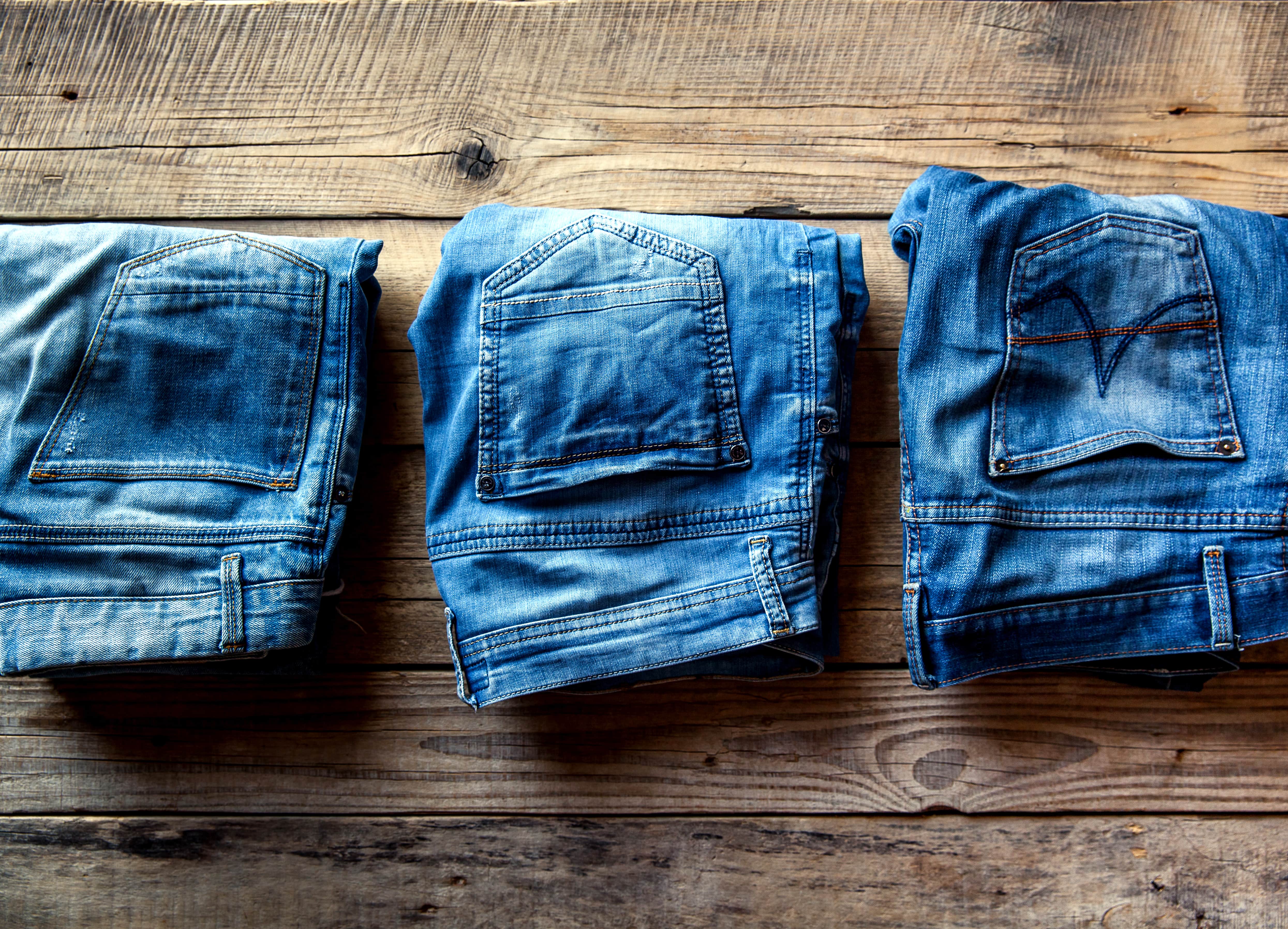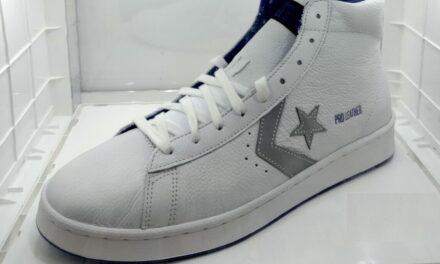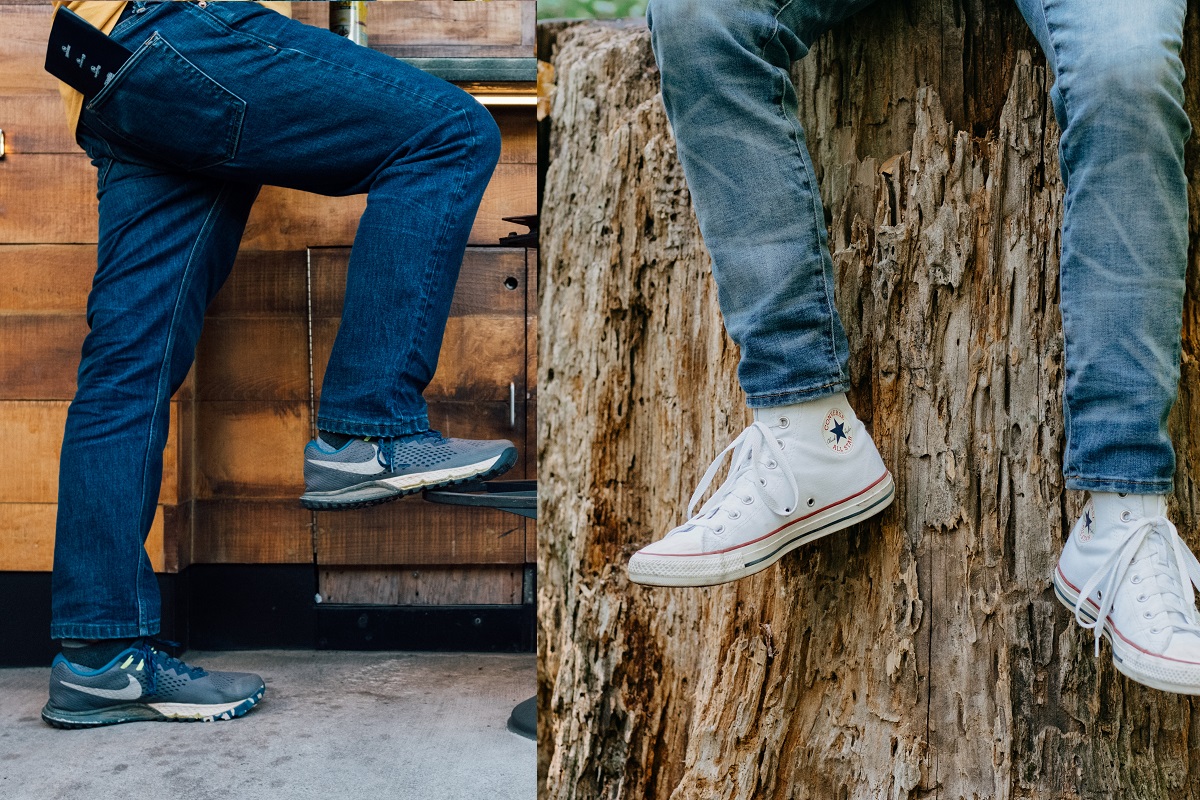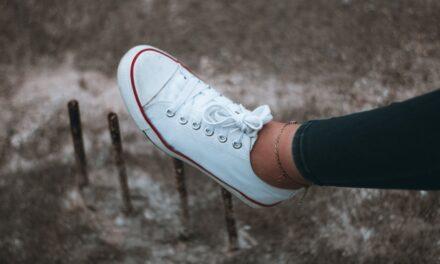Did you ever wonder why jeans is popular? Or why pants, and trousers in general are popular? Well, let’s take a trip back in time and uncover the fascinating journey of denim from humble workwear, waist overalls, to a fashion phenomenon.
Denim, originally designed as sturdy garment for manual labor and wearing, has morphed into an iconic article that dominates modern wardrobes worldwide. Its rise to fame can be attributed to its remarkable versatility and timeless appeal in terms of style and self-expression.
Today, denim is not just a fabric; it has become a symbol of style and self-expression when wearing pants and trousers.
But how did this simple wagon cover transform into a form of cultural significance? Join us as we delve into the captivating evolution of jeans, pants, trousers and unravel the secrets behind their enduring popularity in today’s society.
Denim fashion, including pants and trousers, has come a long way since its job-oriented start as waist overalls.
With its rugged appearance and durable construction, jeans have conquered hearts across generations, transcending social boundaries. They effortlessly blend comfort with trendiness, making them the go-to choice for countless individuals seeking both style and practicality.
So what makes denim so special? Stay tuned as we explore the fascinating world of jeans and uncover the reasons behind their unwavering charm, including their indigo dye.
The Remarkable History of Denim: How It Became an Iconic Fabric
Tracing the Origins of Denim
Denim, a fabric that has become synonymous with style and durability, can be traced back to its invention by Levi Strauss in the 19th century.
This revolutionary fabric, known for modern jeans, was originally created as workwear for miners and laborers due to its exceptional strength and resilience. Made from true denim, which is a sturdy cotton fabric woven in a twill pattern, it quickly gained popularity for its ability to withstand the rigors of manual labor.
Today, washing jeans has become a common practice to maintain their quality and longevity. Denim’s versatility also extends to tight jeans, which have become a popular fashion trend. Blue jeans remain an iconic staple in many wardrobes worldwide.
The Role of Denim During the California Gold Rush
Denim truly came into the limelight during the California Gold Rush in the mid-1800s. As thousands flocked to California in search of gold, miners needed durable clothing that could endure their demanding work conditions.
Levi Strauss recognized this need and began producing denim overalls made from duck cotton, a heavy-duty material ideal for rugged environments. Today, modern jeans are still popular, with washing jeans being a common practice to keep them clean and fresh.
Many people also prefer tight jeans for a fashionable look, but the classic choice remains blue jeans.
The introduction of indigo dye further enhanced denim’s appeal. This deep blue dye not only added aesthetic value but also acted as a protective layer against wear and tear, especially when washing jeans.
Miners soon realized that their denim garments, including tight jeans and pants, were not only practical but also stylish, leading to an increase in demand for this versatile fabric made from duck cotton.
Denim as a Symbol of Rebellion and Counterculture
In the mid-20th century, denim pants took on a new role as it became associated with rebellion and counterculture movements.
From Hollywood rebels like James Dean sporting blue jeans in “Rebel Without a Cause” to rock icons like Elvis Presley donning denim pants on stage, jeans became an emblem of nonconformity.
The youth embraced denim pants as they sought to challenge societal norms and express their individuality. Jeans, also known as blue pants, symbolized freedom, authenticity, and anti-establishment values.
This cultural shift propelled denim into mainstream fashion, making it more than just workwear or casual attire—it became an expression of personal identity. The invention of denim pants by Levi Strauss and Jacob Davis played a significant role in this movement.
The Global Impact of Denim
Denim’s popularity transcended borders and cultures, making it a truly global phenomenon. As fashion trends spread across continents, jeans, or pants, became a universal symbol of casual style and youthfulness.
From the streets of New York, the birthplace of blue jeans by Levi Strauss and Jacob Davis, to the alleyways of Tokyo, denim found its place in every corner of the world.
The versatility of blue denim allowed it to adapt to various fashion movements. Whether it was the grunge-inspired ripped jeans of the ’90s or the skinny jean craze in the 2000s, blue denim remained a staple in wardrobes worldwide. Its enduring appeal lies in its ability to effortlessly blend comfort, durability, and style.
Today, denim, also known as blue jeans, continues to evolve with new technologies and innovations. From different dye techniques to experimenting with fibers other than cotton, designers are pushing boundaries while staying true to denim’s rich history.
Denim, or blue jeans, has come a long way from its humble beginnings as workwear for miners—it has become an iconic fabric that represents both tradition and rebellion.
The Manufacturing Process: Unveiling the Origins and Production of Jeans
From Raw Cotton to Durable Denim Fabric
Jeans, the beloved staple of our wardrobes, start their journey from humble raw cotton. This natural fiber undergoes a fascinating transformation to become the durable blue denim fabric we know and love. The manufacturing process of jeans involves several intricate steps that contribute to their enduring popularity among us, men.
The first stage begins with washing the raw cotton fibers to remove impurities and prepare them for spinning into blue yarn. Once cleaned, the cotton is spun into long strands, which are then woven together to create denim fabric.
The weaving process determines the characteristic diagonal pattern known as twill that gives men’s jeans their distinctive look.
Cutting, Sewing, and Finishing Jeans
Once the blue denim fabric is ready, it’s time for cutting, sewing, and finishing—the crucial steps in turning it into a pair of blue jeans. Highly skilled workers meticulously cut out each piece of fabric according to precise patterns that maximize efficiency and minimize waste.
After cutting, these individual denim pieces are sewn together using heavy-duty stitching techniques that ensure durability. Seamstresses and tailors work diligently to assemble each component—front panels, back panels, pockets, belt loops—into a cohesive denim jeans garment made of raw denim, the true denim fashion.
To give jeans their desired fit and style variations like bootcut or skinny jeans undergo additional alterations during this stage. Adjustments may include tapering leg openings or adding stretch materials for comfort.
The reason denim undergoes these alterations is to maintain the authenticity of true denim and keep up with current denim fashion trends. Additionally, raw denim is often used as a base material for these alterations to provide a unique and high-quality finish.
Stone Washing and Distressing Techniques
One of the reasons why jeans remain popular is their ability to adapt to different fashion trends. Stone washing and distressing techniques play a significant role in achieving various looks that range from vintage-inspired faded denim to edgy ripped styles.
Stone washing involves tumbling jeans with pumice stones or enzymes in large industrial machines. This process creates a worn-in appearance by softening the fabric’s texture and fading its color unevenly.
Distressing techniques, such as sanding or scraping, are used to create intentional wear and tear marks on jeans. These distressed areas add character and a lived-in feel to the garment.
Sustainable Practices in Denim Manufacturing
As sustainability becomes increasingly important, the blue jeans denim manufacturing industry has taken steps to reduce its environmental impact. Many companies now prioritize eco-friendly practices throughout the blue jeans production process.
Some denim jeans manufacturers have implemented water-saving technologies that minimize water usage during washing and dyeing processes. Others use organic cotton or recycled fibers, reducing the need for virgin materials in the production of blue jeans.
Ethical labor practices are gaining prominence within the denim industry, specifically in the production of blue jeans. Brands are working towards ensuring fair wages and safe working conditions for their employees at every stage of blue jeans production.
By embracing sustainable practices, the denim manufacturing industry aims to make jeans not only fashionable but also environmentally responsible choices for consumers.
Denim Goes Global: Exploring the Worldwide Market for Jeans
Embraced by People Worldwide
Denim jeans have achieved a remarkable feat in the world of fashion – they have become a universal clothing item embraced by people across the globe. From rural areas to bustling cities, you can find individuals sporting denim in various forms, be it jeans, denim overalls, or jackets. The popularity of denim is not limited to any specific region or demographic; it has transcended borders and cultures.
Economic Impact of the Global Denim Market
The global denim market is a thriving industry that generates billions in revenue annually. This versatile fabric has created countless job opportunities and contributed significantly to local economies worldwide.
From small-scale manufacturers in developing countries to large corporations based in industrialized nations, the production and sale of denim have become an integral part of many economies.
Cultural Influences on Jean Preferences
Different regions and demographics exhibit unique cultural influences on their jean preferences in the US. For instance, jeans are deeply ingrained in American culture, particularly associated with the American West.
Cities like San Francisco and Davis played pivotal roles in establishing jeans as a symbol of freedom and rebellion during the counterculture movements of the 1960s. Even today, denim remains an iconic representation of American heritage.
Beyond America, other cultures have also adopted jeans as a fashion staple. In Japan, for example, there is a strong affinity for high-quality selvedge denim produced using traditional techniques. In Western European countries like France and Italy, designer denim brands hold significant appeal among fashion-conscious individuals.
Emerging Trends Shaping Future Demand
The international market for jeans, including the US, continues to evolve with emerging trends that shape future demand. Here are some notable examples:
- Sustainable Denim: With growing environmental awareness, consumers are increasingly seeking eco-friendly options. As a result, there is a rising demand for sustainably produced denim made from organic cotton or recycled materials.
- Customization and Personalization: Consumers are gravitating towards personalized fashion experiences. Brands now offer customization options, allowing individuals to tailor their jeans to their unique preferences, such as fit, wash, and embellishments.
- Athleisure Influence: The athleisure trend has made its mark on the denim industry as well. Denim brands are incorporating stretch fabrics and innovative designs that provide comfort without compromising style.
Distressed Jeans: A Fashion Statement
Tracing back distressed jeans’ roots to ancient textile traditions like patchwork and mending techniques.
Distressed jeans may seem like a modern fashion trend, but their origins can be traced back to ancient textile traditions. Patchwork and mending techniques were commonly used in the past to repair garments and extend their lifespan. Over time, these repairs would create a unique, worn-in look on the fabric.
In many cultures, including those of Eastern Europe and Japan, patched denim jeans clothing was seen as a symbol of resourcefulness and creativity. These early examples of distressed denim jeans garments laid the foundation for what would become one of the most popular styles in modern fashion.
How distressed jeans gained popularity through punk subculture movements in the 1970s onwards.
The rise of distressed jeans as a fashion statement can be largely attributed to the punk subculture movements that emerged in the 1970s. Punk rockers rebelled against societal norms and embraced DIY (do-it-yourself) aesthetics.
They took ordinary denim trousers and transformed them into works of art by ripping, tearing, and adding various embellishments.
This rebellious attitude resonated with many young people who sought an alternative form of self-expression. Distressed jeans became a symbol of nonconformity, individuality, and anti-establishment sentiments.
The trend quickly spread beyond punk circles and gained popularity among mainstream audiences.
The evolution of distressing techniques, including sandblasting, whiskering, and ripping.
As distressed jeans gained popularity over time, fashion designers started experimenting with different distressing techniques to achieve various looks. One such technique is sandblasting, which involves using high-pressure jets of sand or other abrasive materials to wear away the denim fabric selectively.
Whiskering is another common distressing technique that creates faded lines around areas prone to natural creasing—typically found near the crotch and knees. This technique mimics the natural aging process of denim and adds depth to the overall distressed look.
Ripping denim jeans, perhaps the most recognizable distressing technique, involves intentionally tearing or cutting holes in the fabric. This technique can range from subtle distressing with small rips to more extreme styles with large, jagged openings.
The enduring appeal of distressed jeans in contemporary fashion.
Despite being rooted in ancient textile traditions and popularized by subcultures decades ago, distressed jeans continue to be a staple in contemporary fashion. They have transcended their punk origins and become a versatile wardrobe essential for people of all ages and styles.
The appeal of distressed jeans lies in their ability to effortlessly blend comfort, style, and attitude. Whether paired with a casual t-shirt or dressed up with a tailored blazer, distressed jeans add an element of edginess to any outfit. They are an embodiment of individuality and self-expression that appeals to those seeking a unique fashion statement.
The Evolution of Jeans: From Classic Styles to Modern Trends
Exploring the iconic styles that have shaped the history of jeans, from bootcut to skinny.
Jeans have come a long way since their humble beginnings as sturdy work pants. Over the years, different styles have emerged, each leaving its mark on fashion history. One of the most enduring and popular styles is bootcut jeans.
These jeans are characterized by a slim fit through the hips and thighs, with a slight flare at the bottom. They were originally designed to be worn over boots, hence the name.
Bootcut jeans became particularly popular in the mid-20th century and continue to be a staple in many wardrobes today.
Another style that has stood the test of time is skinny jeans. These form-fitting pants hug every curve and have become synonymous with modern fashion trends.
Skinny jeans first gained popularity in the 1950s when rock ‘n’ roll icons like Elvis Presley embraced their rebellious appeal. Since then, they have remained a fashion favorite for both men and women.
How denim trends have evolved over time, reflecting changing fashion preferences.
Denim trends are constantly evolving, mirroring shifts in fashion preferences and cultural influences. In the 1960s, for example, bell-bottom jeans became all the rage as people embraced a more free-spirited and bohemian aesthetic. This wide-legged style was perfect for dancing at music festivals or expressing one’s individuality.
The 1980s brought about an era of excess and experimentation in fashion. Acid wash jeans became popular during this decade, with their unique bleached patterns adding a touch of edginess to any outfit.
The 1990s saw a return to simpler styles with straight-leg jeans reigning supreme.
The influence of celebrities and pop culture on the popularity of specific jean styles.
Celebrities and pop culture play a significant role in shaping denim trends. Few names are as influential as Levi Strauss.
The founder of the iconic Levi’s brand, Strauss revolutionized the way we think about denim with his durable and stylish jeans. From cowboys to rockstars, Levi’s have been worn by countless individuals who became cultural icons in their own right.
Calvin Klein is another brand that has left an indelible mark on the world of jeans. In the 1980s, their provocative advertising campaigns featuring Brooke Shields helped popularize tight-fitting designer jeans.
These ads captured the imagination of a generation and solidified Calvin Klein’s status as a fashion powerhouse.
Current trends like high-waisted jeans and wide-leg silhouettes reshaping the denim landscape.
In recent years, new trends have emerged that are reshaping the denim landscape. High-waisted jeans have made a comeback, offering a flattering fit and vintage-inspired look. This style accentuates the waistline and elongates the legs, making it a favorite among fashion-forward individuals.
Wide-leg denim jeans silhouettes are also gaining popularity, adding a touch of sophistication to any outfit. These flowy pants offer comfort while still maintaining a chic and polished appearance.
Easy to Match, Easy to Maintain: Practicality of Jeans in Everyday Life
Effortlessly Complementing Various Outfits
Jeans have become a staple in almost everyone’s wardrobe due to their ability to effortlessly complement various outfits for different occasions. Whether you’re dressing up for a night out or going for a casual look, jeans provide the perfect foundation.
Pair them with a stylish blouse and heels for a chic evening ensemble, or dress them down with a simple t-shirt and sneakers for a laid-back vibe.
The versatility of jeans is unmatched. They can be dressed up or down depending on the occasion, making them suitable for everything from formal events to casual outings. With just one pair of jeans, you can create multiple looks that suit your personal style and the demands of your day-to-day life.
Durability and Longevity: A Practical Choice
One of the key reasons why jeans are so popular is their durability and longevity. Originally known as “waist overalls,” jeans were designed to withstand tough conditions, making them ideal for manual laborers. Over time, they evolved into fashionable attire while retaining their attractive quality of being incredibly durable.
Unlike other types of pants that may wear out quickly or lose shape after frequent use, jeans are built to last. The sturdy denim fabric ensures that they can withstand daily wear and tear without showing signs of damage. This makes jeans an excellent investment as they can be worn repeatedly without losing their appeal.
Caring for Your Jeans
To ensure the longevity and maintain the appearance of your favorite pair of jeans, it’s essential to follow proper care instructions. Here are some tips:
- Washing: Turn your jeans inside out before washing them in cold water with a mild detergent.
- Drying: Air-drying is best to prevent shrinkage and maintain the color vibrancy.
- Avoid excessive washing: Jeans don’t need to be washed after every wear. Spot cleaning and airing them out can help preserve their shape and color.
By taking care of your jeans, you can extend their lifespan and keep them looking as good as new for years to come.
Comfort without Compromising Style
Jeans are renowned for their comfort, making them a practical choice for everyday wear. The soft yet sturdy denim fabric allows for ease of movement, ensuring that you stay comfortable throughout the day.
Whether you’re running errands or spending long hours at work, jeans provide the flexibility and comfort needed to tackle any task.
Moreover, jeans offer style without sacrificing comfort. Unlike some formal pants or skirts that may restrict movement or cause discomfort, jeans allow you to look fashionable while still feeling at ease. This combination of style and comfort is what sets jeans apart from other clothing options.
Impact Beyond Fashion: Environmental and Humanitarian Aspects of Jeans
Shedding Light on the Environmental Impact of Denim Production
The popularity of jeans goes beyond their stylish appearance. However, it is crucial to understand the environmental consequences associated with denim production.
The process of manufacturing jeans involves significant water usage and chemical pollution. According to research, it takes approximately 2,000 gallons of water to produce just one pair of jeans. This staggering amount contributes to water scarcity in regions where denim production is concentrated.
The chemicals used during dyeing and finishing processes pose a threat to both human health and the environment. Harmful substances like bleach and synthetic dyes are often discharged into rivers and streams, causing pollution that affects aquatic ecosystems.
Efforts by Brands Towards Sustainable Practices
Thankfully, many clothing brands have recognized the need for change within the denim industry and are taking steps towards more sustainable practices.
One such effort is the use of organic cotton as an alternative to conventional cotton in jean production. Organic cotton eliminates the use of harmful pesticides and reduces water consumption during cultivation.
Moreover, some brands are incorporating recycled materials into their jeans manufacturing process. By repurposing old denim or using recycled polyester fibers made from plastic bottles, these companies minimize waste while still producing high-quality jeans.
Addressing Social Implications Within the Denim Industry
While focusing on environmental impact is crucial, we must also address the social implications within the denim industry. Issues such as fair wages and worker safety have plagued this sector for years. However, recent movements advocating for ethical fashion have helped shed light on these concerns.
Consumers now demand transparency in supply chains, urging brands to ensure fair treatment for workers involved in every step of jean production. By supporting ethically-made jeans, consumers can play a part in improving working conditions within the industry.
The Rise of Ethical Fashion Movements
The rise of ethical fashion movements has further propelled the demand for responsible jean production. Consumers are becoming more conscious of the impact their clothing choices have on both the environment and human lives. As a result, they actively seek out brands that align with their values and prioritize sustainability.
These movements promote transparency in supply chains, encouraging brands to disclose information about sourcing, manufacturing processes, and labor conditions. By doing so, consumers can make informed decisions and support companies that prioritize ethical practices.
Conclusion: Why Jeans is Popular
In conclusion, the enduring popularity of jeans can be attributed to several key factors. Firstly, the remarkable history of denim and its transformation into an iconic fabric has played a significant role in establishing jeans as a fashion staple.
From their humble beginnings as workwear to becoming a symbol of rebellion and self-expression, jeans have captured the imagination of generations.
The global market for jeans has contributed to their widespread popularity. The manufacturing process behind jeans, from their origins in small workshops to mass production in factories, has made them accessible and affordable for people around the world.
This accessibility has further fueled their popularity and ensured that they remain a wardrobe essential for many.
The evolution of jeans over time has also played a crucial role in their continued appeal. From classic styles like straight-leg and bootcut to modern trends such as distressed and ripped jeans, there is a style to suit every individual’s taste.
This versatility ensures that jeans remain relevant in an ever-changing fashion landscape.
Furthermore, the practicality of jeans cannot be overlooked. Their easy-to-match nature makes them suitable for various occasions and outfits. Their durability and low maintenance requirements make them ideal for everyday wear.
Beyond fashion, it is important to consider the environmental and humanitarian aspects of jeans. With growing concerns about sustainability, brands are increasingly adopting eco-friendly practices in denim production. Moreover, initiatives focused on fair labor practices are gaining traction within the industry.
To fully understand why jeans are popular today is not just about recognizing their history or manufacturing process; it requires acknowledging their impact beyond fashion as well as considering practicality and versatility factors that contribute to this enduring popularity.
In light of these insights into why jeans are popular today, it’s clear that they have become more than just a piece of clothing—they are an expression of personal style and cultural significance. So whether you’re looking for comfort or making a fashion statement, embracing the enduring popularity of jeans is both fashionable and sustainable.
FAQs
Q: Can jeans be worn for formal occasions?
Jeans are generally considered casual wear, but depending on the dress code of the event, you can dress them up for semi-formal occasions. Pairing dark-colored jeans with a blazer or a dress shirt can create a more polished look suitable for certain formal settings.
Q: Are distressed jeans still in fashion?
Yes, distressed jeans continue to be popular and have become a fashion statement in recent years. Ripped, torn, or faded designs add an edgy and relaxed vibe to outfits, making them a trendy choice for many individuals.
Q: How do I choose the right fit of jeans?
To find the right fit of jeans, it’s important to consider your body shape and personal preference. Experiment with different styles such as skinny, straight-leg, or bootcut to see which flatters your figure best. Paying attention to waist size and inseam length ensures optimal comfort.
Q: Are there sustainable options available when buying jeans?
Yes, many brands now offer sustainable denim options made from organic cotton or recycled materials. Look for certifications like GOTS (Global Organic Textile Standard) or BCI (Better Cotton Initiative) when purchasing eco-friendly jeans.
Q: Can I wear jeans during hot weather?
While denim may not be the most breathable fabric during hot weather, choosing lighter-weight denim blends or opting for looser-fitting styles can help increase comfort. Selecting lighter washes and avoiding heavy distressing can also make wearing jeans more bearable in warmer temperatures.













